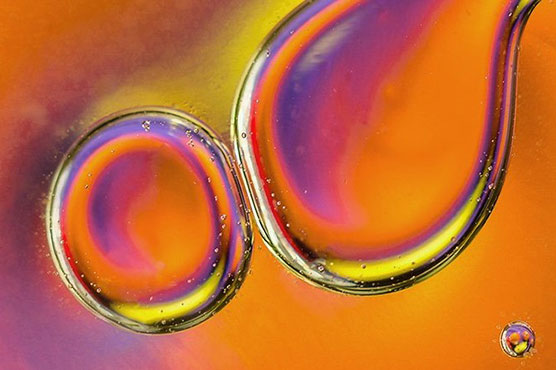Scientists develop 'Liquid Fuel' to store solar energy up to 18 years

The fluid - solar thermal fuel is pumped through transparent tubes to store the energy.
Web Desk – Solar power – the conversion of energy from sunlight into electricity – is the cheapest and efficient long-term storage for the energy.
There have been various evolving innovations taking place in the solar industry, and recently scientists in Sweden have conceived and developed a specialised fluid, called a solar thermal fuel, that can store energy from the sun for more than a decade.
"A solar thermal fuel is like a rechargeable battery, but instead of electricity, you put sunlight in and get heat out, which can be triggered on demand," Jeffrey Grossman, an engineer who works with these materials at the MIT explained to an international media house.
Scientists from the Chalmers University of Technology in Sweden have been working to improve the fluid which is technically a molecule in liquid form composed of carbon, hydrogen and nitrogen.
When sunlight falls on it, something unusual happens: the bonds between its atoms are rearranged, turning itself into an energised new version called an isomer.
As a result, energy from the sun is captured between the isomer s strong chemical bonds, and it stays there even when the molecule cools down to room temperature.
When the energy is required - say at nighttimes, or during winter - the fluid is simply drawn through a catalyst that returns the molecule to its original form to release energy in the form of heat.
"The energy in this isomer can now be stored for up to 18 years," nanomaterials scientist Kasper Moth-Poulsen from the Chalmers University said, adding that when the energy stored is extracted, it yields a remarkable increase as compared to the expected results.
The astonishing results have caught the attention of numerous investors when a prototype of the energy system was placed on the roof of a university building for testing purpose, according to the researchers.
The renewable, emissions-free energy device is made up of a concave reflector with a pipe in the centre, which tracks the sun like a sort-of satellite dish – modelling the system to operate in a circular manner.
The fluid is pumped through transparent tubes, which in turn are heated up by the sunlight. This enables the molecule ‘norbornadiene’ into a heat-trapping isomer called quadricyclane.
Later, the fluid is stored at room temperature with minimal loss of energy.
When the energy is required, the fluid is filtered through a special catalyst which converts its molecules back to their original form by warming the liquid at 63 degrees Celsius.
The hope is that this warmth can be used for domestic heating systems, powering a building s water heater, dishwasher, clothes dryer and much more, before heading back to the roof once again.
The researchers have put the fluid through this cycle more than 125 times, picking up heat and dropping it off without significant damage to the molecule.
"We have made many crucial advances recently, and today we have an emissions-free energy system which works all year around," Moth-Poulsen said.
The researchers have claimed their fluid could now store 250 watt-hours of energy per kilogram, twice than the energy capacity of Tesla s Powerwall batteries.
By further improving and optimising the system, the researchers expect even more energy generation, at least 110 degrees Celsius more.
They expect that the technology could be available for commercial use within 10 years, if everything goes as planned.

